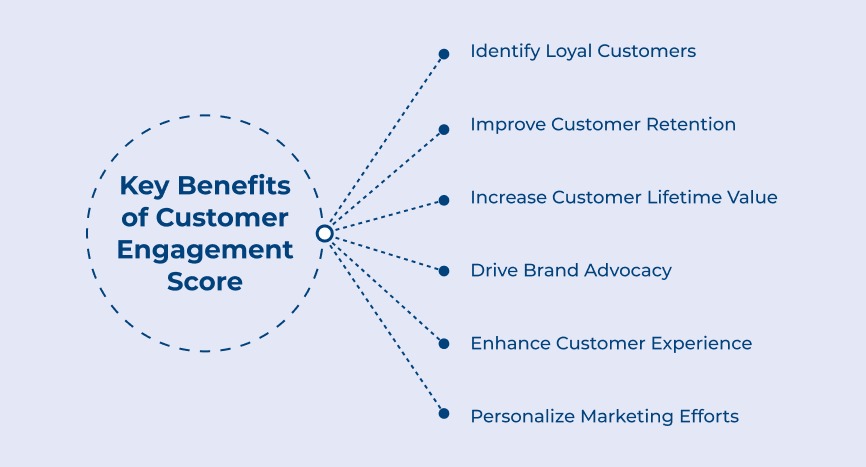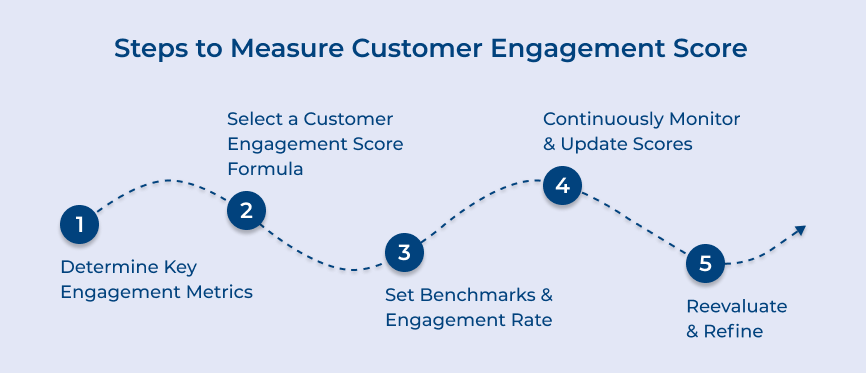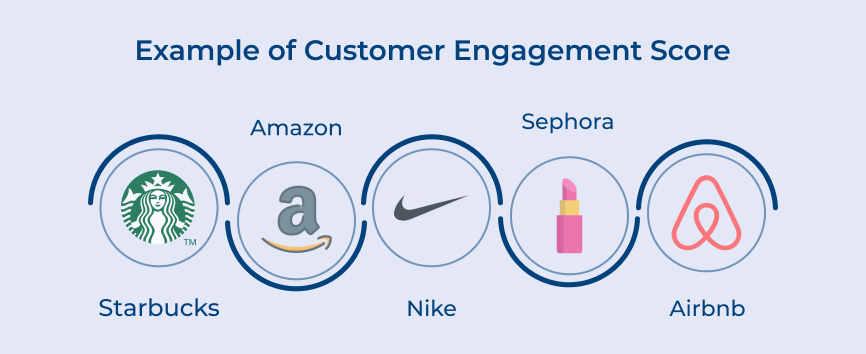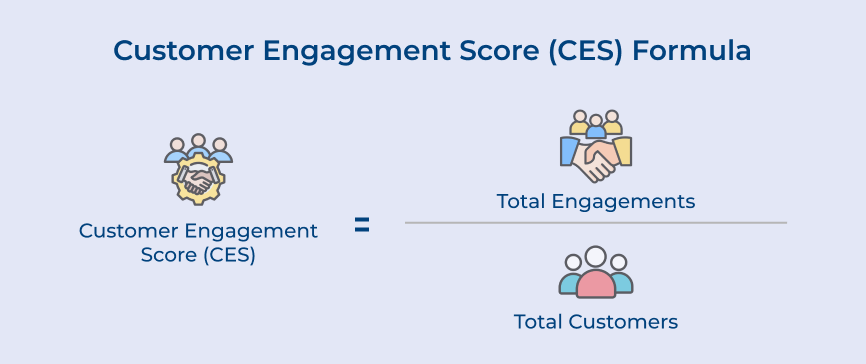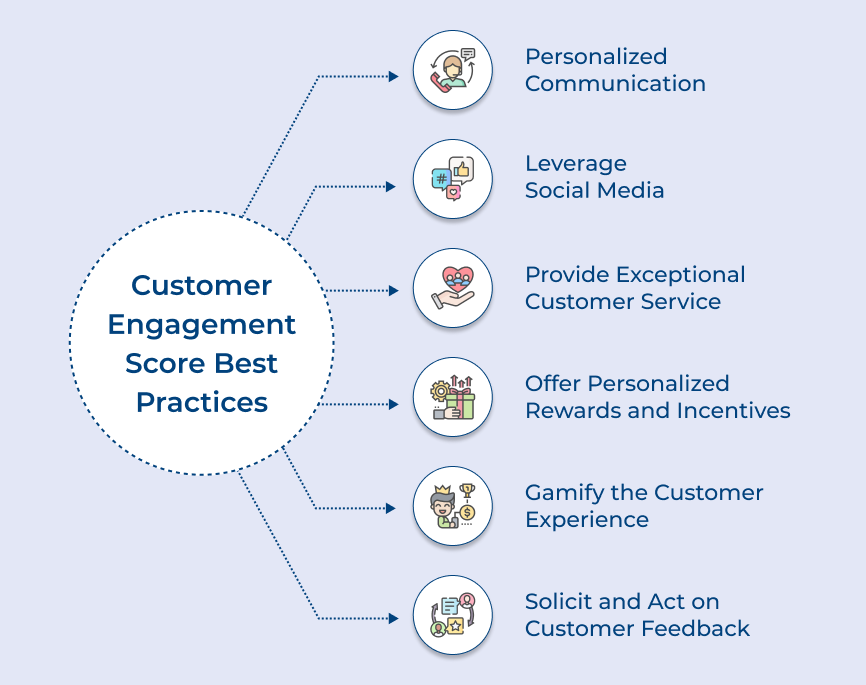1. Determine Key Engagement Metrics
Determining key customer engagement metrics is crucial in measuring customer engagement scores. It allows businesses to analyze the effectiveness of their marketing efforts and understand how well they are engaging with their target audience. Businesses can make informed decisions and optimize their strategies to enhance customer engagement by measuring the right metrics.
Imagine a business that determined one of the key customer engagement metrics to be the click-through rate (CTR) of their email campaigns. They can evaluate how well their emails are encouraging recipients to take desired actions by analyzing the CTR. If the CTR is low, they can experiment with different subject lines, messaging, or call-to-action buttons to improve engagement and increase conversions.
Pro tips:
- Set clear objectives: Begin by defining the goals and objectives. What do you want to achieve through the marketing efforts? Align the goals with metrics that reflect customer engagement.
- Identify relevant metrics: Look for metrics that directly relate to customer engagement. Choose metrics that align with the business goals and provide meaningful insights into engagement.
- Test and refine: Test different approaches and strategies to see what works best for the target audience. Refine the customer engagement metrics over time based on your findings and adjust the marketing efforts.
2. Select a Customer Engagement Score Formula
Once the key customer engagement metrics have been identified, it is important to develop a customer engagement score formula that aligns with the business’s objectives. The formula should assign different weights to each metric based on their significance to the overall customer engagement. Selecting the right formula is crucial when it comes to measuring customer engagement.
Let’s take an example of a company using a formula that takes into account factors such as the frequency of purchases, customer feedback, and social media interactions. The company can determine which customers are highly engaged and which ones need more attention. It can be done by assigning weights to each factor and calculating an engagement score
Pro tips:
- Define relevant engagement factors: Consider the specific interactions and behaviors that indicate engagement for the business. It could include activities such as website visits, email open rates, social media interactions, or customer feedback.
- Assign appropriate weights: Determine the importance of each engagement factor and assign appropriate weights to them. Some factors might hold more significance than others, so ensure your formula reflects this.
- Regularly review and adjust: The factors that drive engagement may change as the business and customer base evolve. It’s essential to periodically review and adjust the formula accordingly to ensure its relevance.
3. Set Benchmarks and Engagement Rate
Companies must set benchmarks and goals for the customer engagement score to gauge the effectiveness of customer engagement strategies. Benchmarks can be established by comparing the customer engagement score with industry averages or competitors’ scores. Goals should be specific, measurable, attainable, relevant, and time-bound (SMART) to drive improvement.
Let’s say a business wants to increase its social media engagement score by 20% within three months. They can consistently monitor their performance and adjust their strategies accordingly by setting the benchmark. If they fall short of the goal, they can re-evaluate the approach and make necessary improvements.
Pro tips:
- Define specific, measurable objectives: Clearly outline what you want to achieve and ensure the goals are quantifiable. An example here can be to increase website traffic by 30% or boost email click-through rates by 15%.
- Research Industry Standards: Gain insights into industry benchmarks to understand what constitutes a good result. The knowledge will help in setting challenging yet achievable goals.
- Set Realistic Timeframes: Be mindful of the time it takes to see results. Setting ambitious goals should be encouraged but they should be achievable within a reasonable timeframe.
4. Continuously Monitor and Update Scores
Customer engagement is not a one-time measurement but an ongoing process. It is crucial to regularly monitor and update customer engagement scores to track changes over time. It allows businesses to stay in touch with their audience and adapt their marketing strategies accordingly.
Consider an example of a fashion e-commerce company. They could track how often customers visit their website, make purchases, and interact with their marketing campaigns by monitoring their customer engagement scores. The data can help them identify patterns and tailor their offerings to meet customer preferences. They may notice that certain types of promotional emails receive higher click-through rates than others.
Pro tips:
- Utilize analytics tools: Invest in robust analytics tools that provide comprehensive insights into customer behaviors. They can identify areas for improvement and make data-driven decisions by regularly analyzing the metrics.
- Seek customer feedback: Actively seek feedback from the customers through surveys, reviews, or social media platforms. It enables businesses to understand their needs, preferences, and pain points, allowing them to make necessary adjustments.
- Stay agile and adapt: Regularly evaluate the customer engagement initiatives and update the tactics accordingly. It demonstrates the commitment to delivering a personalized and meaningful customer experience.
5. Reevaluate and Refine
Measuring customer engagement is crucial for businesses to understand the effectiveness of their marketing strategies and the level of satisfaction among their customer base. One effective step in the process is to reevaluate and refine the approach. Companies can improve customer engagement and ultimately boost the business’s success by continuously assessing the methods.
Let’s consider a fitness apparel company that wants to measure customer engagement. They initially launched a social media campaign to promote their new product line. They notice a decline in engagement on certain platforms by continuously reevaluating and refining their strategy. Reallocating the marketing efforts to the platform helps to regain customer engagement, resulting in increased sales and brand loyalty.
Pro tips:
- Regularly review customer feedback: Encourage customers to provide feedback and analyze the feedback to identify areas of improvement or concerns.
- Stay updated on market trends: Keep a close eye on industry trends, competitor strategies, and changing customer behaviors. It helps in adapting the approach and staying relevant in the market.
- Test and measure different strategies: Experiment with various marketing techniques, such as personalized messaging, targeted ads, or interactive content. Measure the results of the strategies to determine what resonates best with the audience and refine the approach accordingly.
6 Example of Customer Engagement Score
Let us look at some examples of customer engagement scores that can help you evaluate and enhance your connection with customers.






